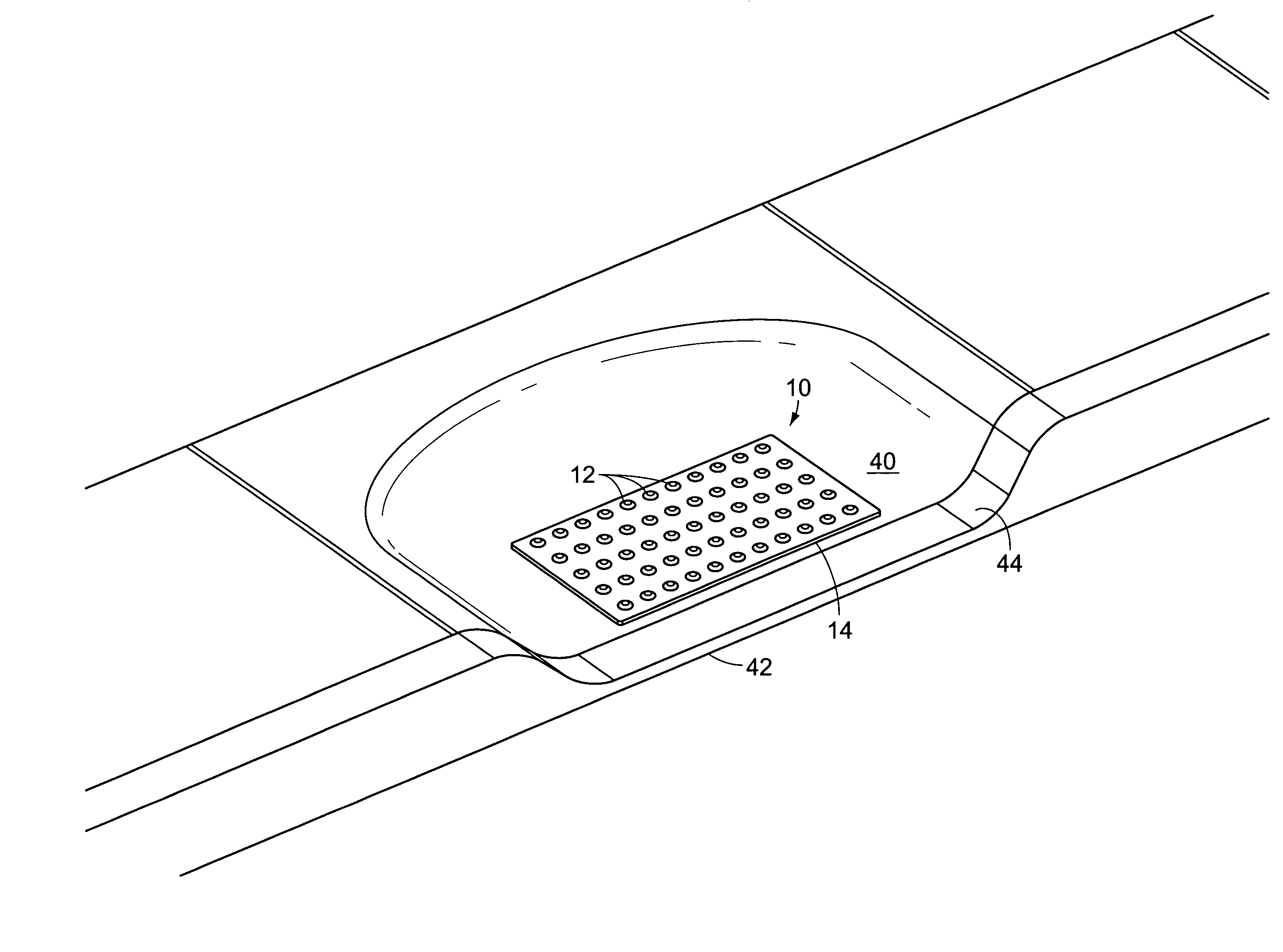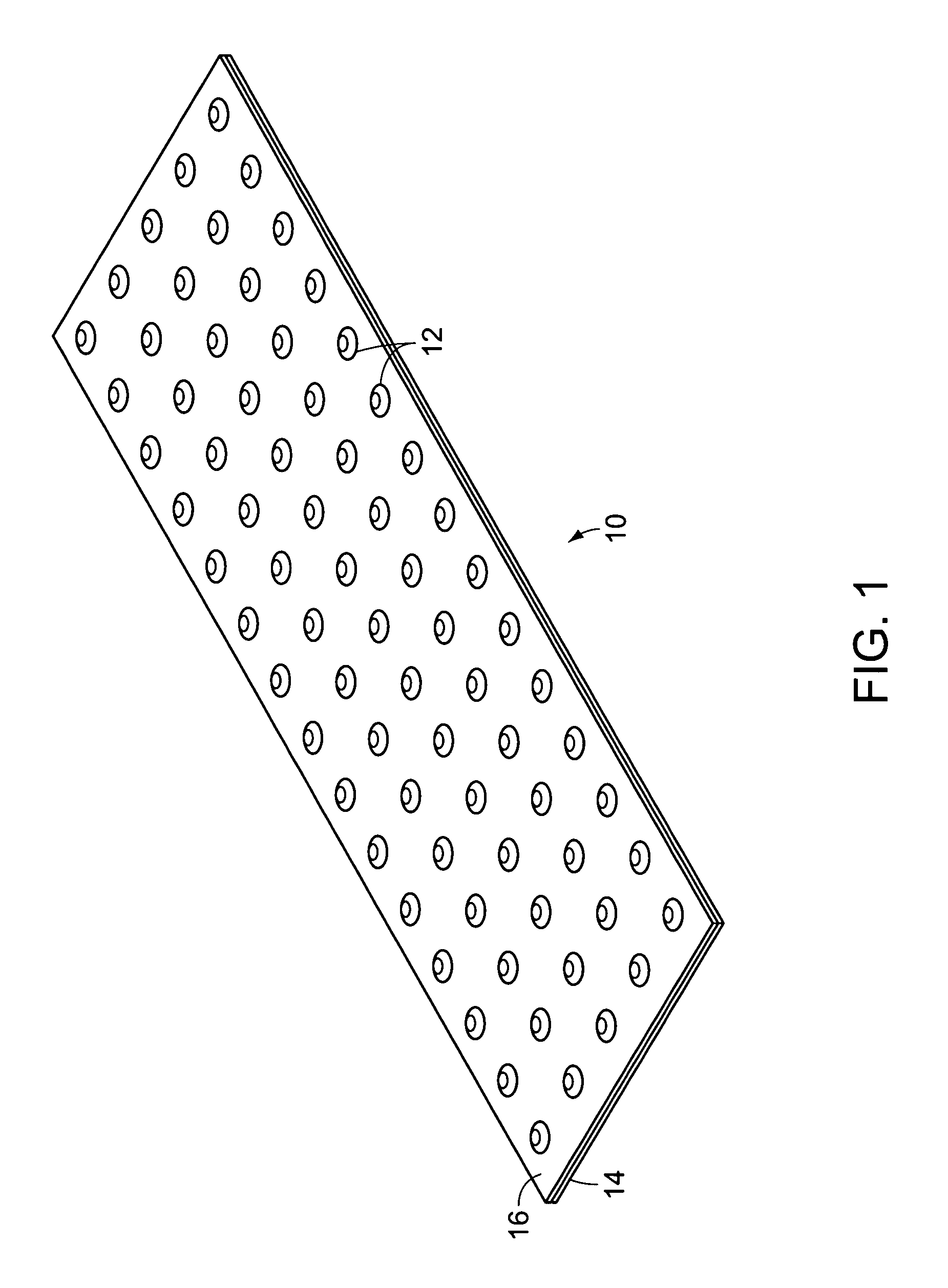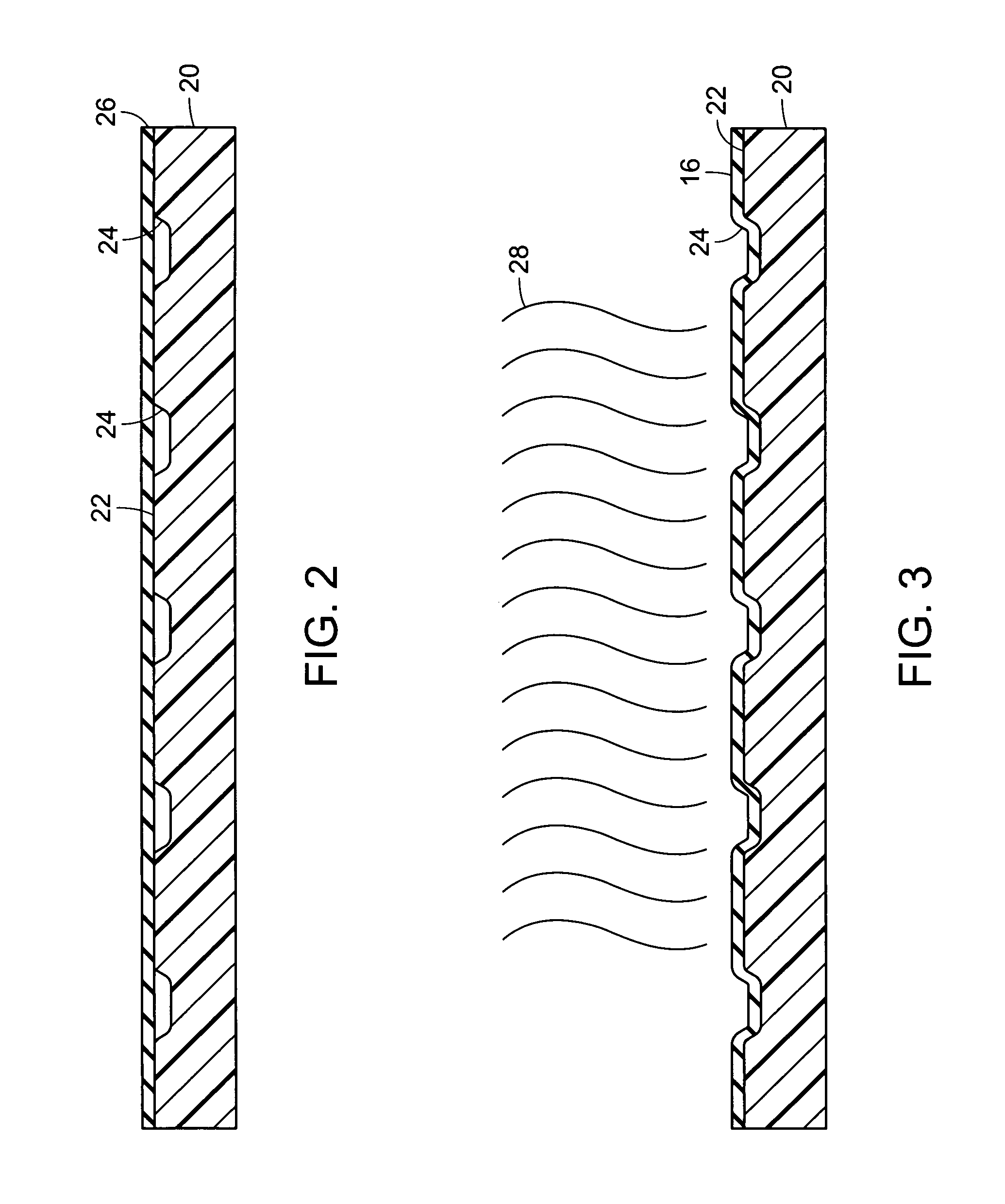Detectable warning system
a detection and warning system technology, applied in wireless systems/telephones, ways, instruments, etc., can solve the problems of difficult installation of warnings, difficulty in discerning the boundary between pedestrian safety and danger, and inconvenient installation of such warnings
- Summary
- Abstract
- Description
- Claims
- Application Information
AI Technical Summary
Benefits of technology
Problems solved by technology
Method used
Image
Examples
Embodiment Construction
[0019]FIG. 1 illustrates a detectable warning carrier assembly 10 comprising a plurality of detectable warning domes 12 arranged in an evenly spaced, grid-like pattern, and encased between a base layer 14 and a top layer 16. The carrier assembly 10 is substantially planar in between detectable warning domes 12. The domes 12 are preferably truncated, such that they are flattened on top.
[0020]To facilitate proper application of the detectable warning carrier assembly 10, the base layer 14 and top layer 16 are preferably made of thermoplastic. The use of thermoplastic allows the base layer 14 and top layer 16 to melt so as to conform to the contours of the recipient surface, and to effectively bond with said recipient surface by flowing into cracks and pores present thereon.
[0021]Referring to FIG. 2, formation of the detectable warning carrier assembly centers upon a mold 20 having a top surface 22 and a plurality of dome forming cavities 24 extending downwardly from the top surface 22...
PUM
 Login to View More
Login to View More Abstract
Description
Claims
Application Information
 Login to View More
Login to View More - R&D
- Intellectual Property
- Life Sciences
- Materials
- Tech Scout
- Unparalleled Data Quality
- Higher Quality Content
- 60% Fewer Hallucinations
Browse by: Latest US Patents, China's latest patents, Technical Efficacy Thesaurus, Application Domain, Technology Topic, Popular Technical Reports.
© 2025 PatSnap. All rights reserved.Legal|Privacy policy|Modern Slavery Act Transparency Statement|Sitemap|About US| Contact US: help@patsnap.com



